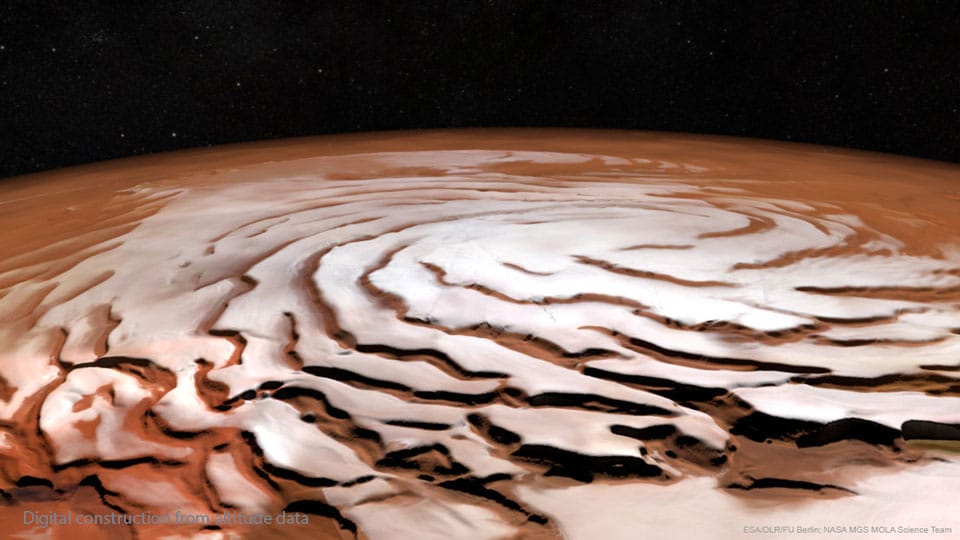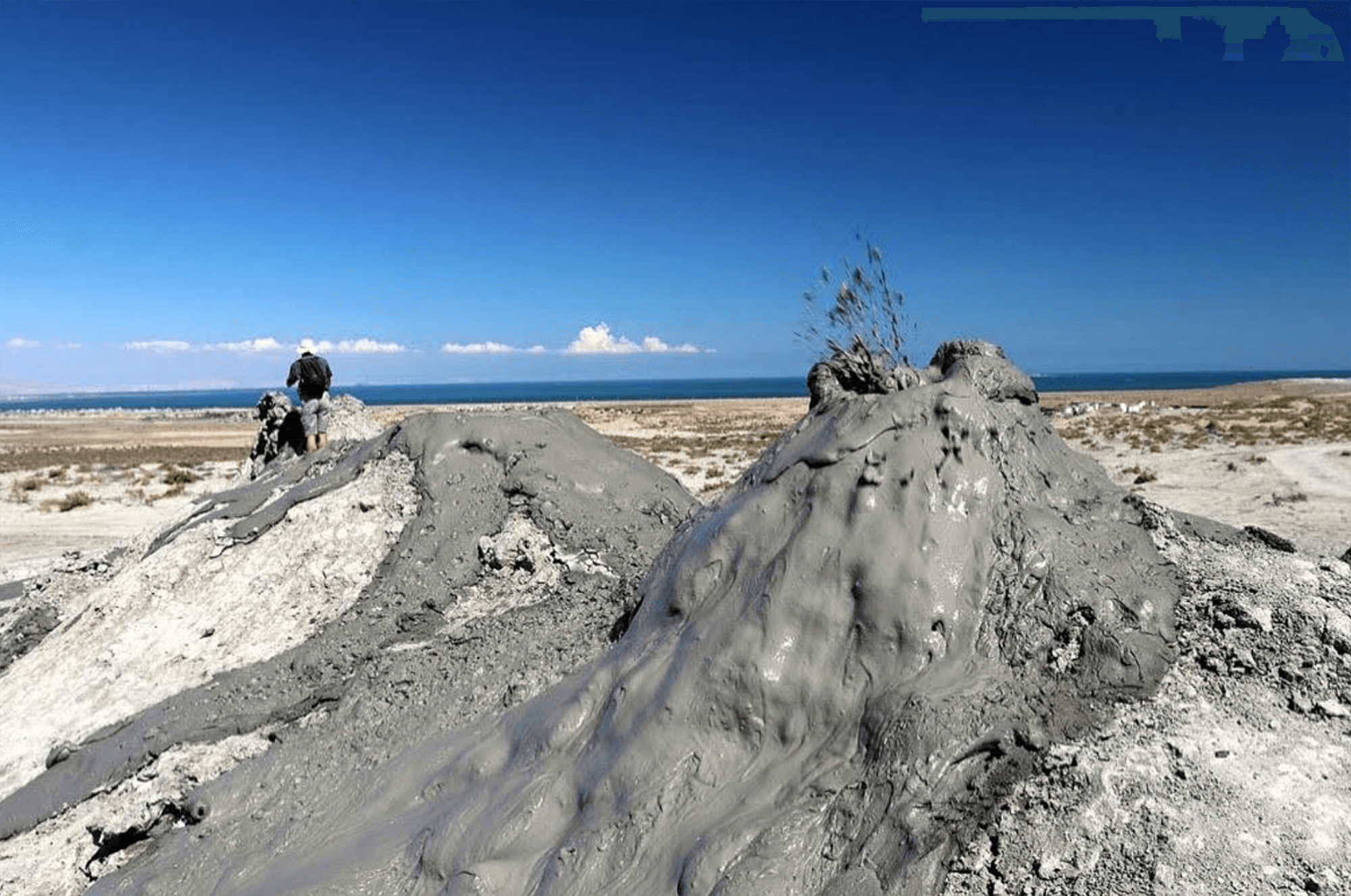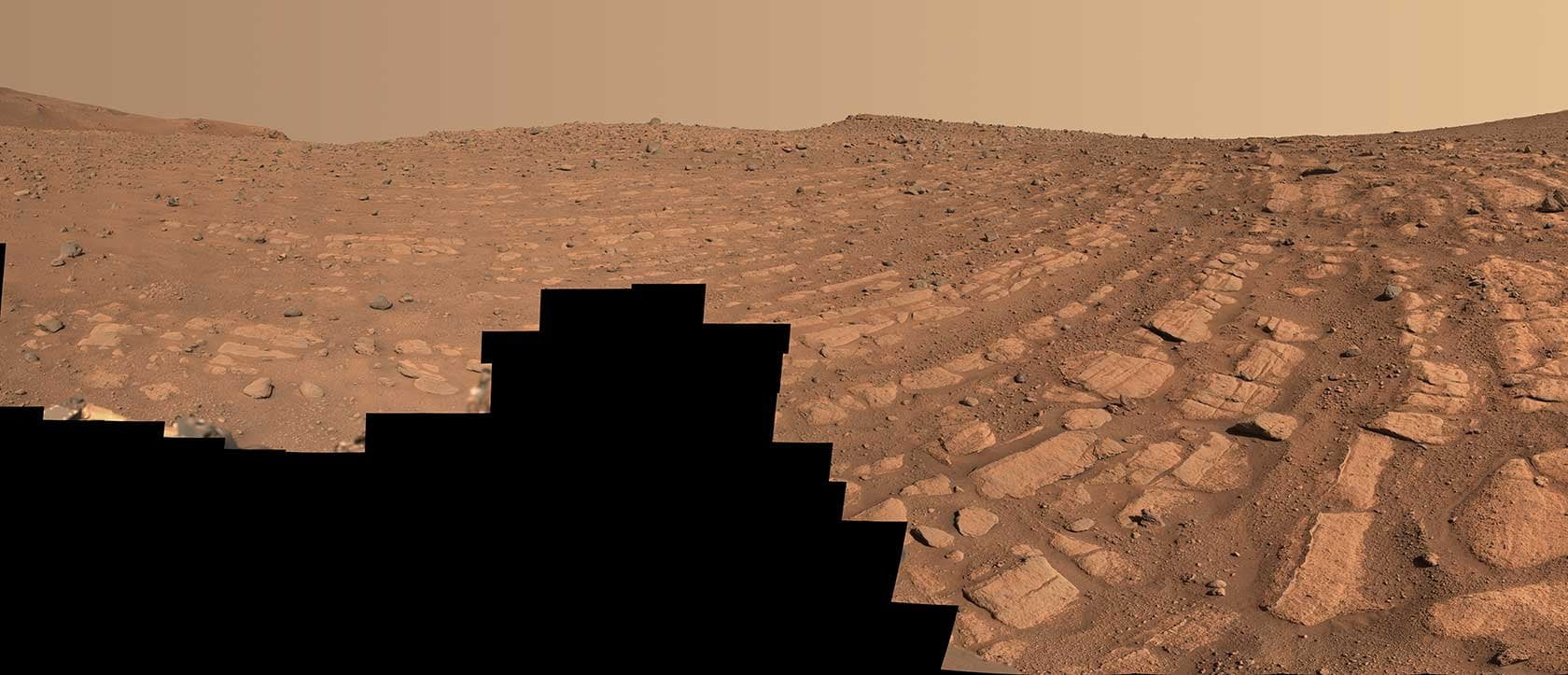The North Pole of Mars is a raised spiral, and each winter a new layer, roughly a meter thick, of carbon dioxide ice gets deposited over it. Strong cold winds rush down from the center of the pole. Mars’s spin creates a Coriolis effect that makes the winds spiral out as they descend. When they cross a depression in the surface, it creates a vortex that erodes the depression deeper. As the depressions deepen and merge, they form the troughs seen here. For more, see this post. (Image credit: ESA/DLR/FU Berlin; NASA MGS MOLA Science Team; via APOD)
Tag: Mars

Martian Streaks Are Dry
Dark lines appearing on Martian slopes have triggered theories of flowing water or brine on the planet’s surface. But a new study suggests that these features are, instead, dry. To explore these streaks, the team assembled a global database of sightings and correlated their map with other known quantities, like temperature, wind speed, and rock slides. By connecting the data across thousands of streaks, they could build statistics about what variables correlated with the streaks’ appearance.
What they found was that streaks didn’t appear in places connected to liquid water or even frost. Instead, the streaks appeared in spots with high wind speeds and heavy dust accumulation. The team included that, rather than being moist areas, the streaks are dry and form when dust slides down the slope, perhaps triggered by high winds or passing dust devils.
Although showing that the streaks aren’t associated with water may seem disappointing, it may mean that NASA will be able to explore them sooner. Right now, NASA avoids sending rovers anywhere near water, out of concern that Earth microbes still on the rover could contaminate the Martian environment. (Image credit: NASA; research credit: V. Bickel and A. Valantinas; via Gizmodo)

Martian Mud Volcanoes
Mars features mounds that resemble our terrestrial mud volcanoes, suggesting that a similar form of mudflow occurs on Mars. But Mars’ thin atmosphere and frigid temperatures mean that water — a prime ingredient of any mud — is almost always in either solid or gaseous form on the planet. So researchers explored whether salty muds could flow under Martian conditions. They tested a variety of salts, at different concentrations, in a low-pressure chamber calibrated to Mars-like temperatures and pressures. The salts lowered water’s freezing point, allowing the muds to remain fluid. Even a relatively small amount of sodium chloride — 2.5% by weight — allowed muds to flow far. The team also found that the salt content affected the shape the flowing mud took, with flows ranging from narrow, ropey patterns to broad, even sheets. (Image credit: P. Brož/Wikimedia Commons; research credit: O. Krýza et al.; via Eos)

Playful Martian Dust Devils
The Martian atmosphere lacks the density to support tornado storm systems, but vortices are nevertheless a frequent occurrence. As sun-warmed gases rise, neighboring air rushes in, bringing with it any twisted shred of vorticity it carries. Just as an ice skater pulling her arms in spins faster, the gases spin up, forming a dust devil.

In this recent footage from the Perseverance Rover, four dust devils move across the landscape. In the foreground, a tiny one meets up with a big 64-meter dust devil, getting swallowed up in the process. It’s hard to see the details of their crossing, but you can see other vortices meeting and reconnecting here. (Video and image credit: NASA/JPL-Caltech/LANL/CNES/CNRS/INTA-CSIC/Space Science Institute/ISAE-Supaero/University of Arizona; via Gizmodo)

Seeking Mars’ Past
Although Mars is quite dry and inhospitable today, our rovers continue to search for evidence of a past Mars that could have sustained life. A recent study suggests that, at least in Gale Crater, the opportunities for life to flourish may have been short-lived. In particular, the team looked at carbonates found by the Curiosity rover. These minerals contain varying amounts of carbon and oxygen isotopes that can hint at the conditions the carbonates formed under. The team found a high proportion of heavier isotopes, which suggest one of two possible formation paths. In the first, Gale Crater underwent wet-dry cycles that alternated between more- and less-habitable conditions for life. The second possibility is a cryogenic past, where most of the local water was locked in ice, and life would have had to survive — if possible — in small pockets of extremely salty water. Neither possibility is a great one for the kinds of life we’re accustomed to. (Image credit: NASA; research credit: D. Burtt et al.; via Gizmodo)

Martian Auroras
Auroras happen when energetic particles — usually from the solar wind — interact with the atmosphere. Here on Earth, they’re most often found near the poles, where our strong global magnetic field converges, funneling particles down from space. Our neighbor Mars has no global magnetic field. Instead, its magnetic field is a hybrid of two sources: 1) induced magnetism from electric currents in the ionosphere and 2) patches of magnetized iron-rich crust. Together, they form an uneven and changeable field that deflects the solar wind less than one Mars radius above the planet’s surface. In contrast, Earth deflects the solar wind about 10-20 Earth radii away.
Discrete auroras (left panel) occur when electrons plunge down into the atmosphere on magnetic lines coming from Mars’ patchy crust. Global diffuse auroras (center panel) are caused by energetic solar storms that light up the whole atmosphere, sometimes for days at a time. In proton auroras (right panel), incoming solar protons steal electrons from native Martian hydrogen to form high-energy hydrogen atoms that cannot be magnetically deflected. Instead, they penetrate the planet’s bow shock and plunge into the atmosphere, creating a daytime aurora. (Image credit: UAE Space Agency/EMM/EMUS and NASA/MAVEN/IUVS; via Physics Today)

Water Suspected Beneath Mars
The surface features of Mars — crossed by river deltas and sedimentary deposits — indicate a watery past. Where that water went after the planet lost its atmosphere 3 – 4 billion years ago is an open question. But a new study suggests that quite a bit of that water moved underground rather than escaping to space.
The research team analyzed seismic data from the Mars InSight Lander. Marsquakes and meteor strikes on the Red Planet send seismic waves through the planet’s interior. The waves’ speed and other characteristics change as they pass through different materials, and by comparing different waves picked up from the same originating source, scientists can back out what the waves passed through on the way to the detector. In this case, the team concluded that the data best fit a layer of water-filled fractured igneous rock 11.5 – 20 kilometers below the surface. They estimate that the water trapped in this subsurface layer is enough to cover the surface of the planet in a 1 – 2 kilometer deep ocean. (Image credit: NASA/JPL-Caltech; research credit: V. Wright et al.; via Physics World)

The Unusual Auroras of Mars
Earth, Saturn, and Jupiter have auroras at their poles, generated by the interaction of their global magnetic fields with the solar wind. Mars has no global magnetic field, only remnants of one frozen into areas of its crust; yet it, too, has auroras. Mars’s auroras are rarer and discrete. They occur most often over the southern hemisphere, and researchers now think they know why.
Four billion years ago, we think Mars had a global magnetic field, much like Earth does. But somehow the planet lost that field. The traces that remain are caught in the minerals of its crust, much like the ancient magnetic fields recorded in areas of the Earth’s sea floor. These magnetized regions of Mars’s crust, shown above as contours in pink and blue, are where the discrete auroras occur.
Using data from NASA’s MAVEN spacecraft, which orbits Mars, the team discovered a pattern. They found that auroras occur most often when the magnetic lines of the incoming solar wind run antiparallel to the magnetic field lines of the crust. This suggests that the auroras happen as a result of magnetic reconnection, a process where antiparallel magnetic field lines rearrange themselves, releasing energy as a result. Reconnection events provide an opportunity for electrons from the solar wind to accelerate into Mars’s atmosphere, exciting molecules there and generating the auroras. So far we’ve only caught the auroras in UV light, but hopefully one day we’ll see them in visible light as well. (Image credit: R. Lillis et al.; research credit: C. Bowers et al. and B. Johnston et al.; via APS Physics)

Fast-Moving Martian Rivers
For the first time, scientists have found evidence of deep, fast-flowing ancient rivers on Mars. After examining images taken recently by the Perseverance rover in Jezero Crater, fluvial experts have spotted familiar signs of turbulent river flow. The mosaic above shows an area nicknamed “Shrinkle Haven,” where curved bands of rock mark the landscape. Although scientists are confident that a powerful river deposited these rocks, they’re still debating whether that river was a meandering one like the Mississippi or a braided river like the Platte.

Nicknamed “Pinestand,” this hill’s sedimentary layers were likely formed by a deep, fast-moving river. In another area, known as “Pinestand,” scientists spotted hills as high as 20 meters tall with clear sedimentary layers. Like Shrinkle Haven’s rock bands, formations like this are most often associated with a large, fast-flowing river. (Image credits: NASA/JPL-Caltech/ASU/MSSS; via Gizmodo; see also NASA JPL)











